Terra Firma: New Grounds
Installation - 2023
Terra Firma : NewGrounds is an installation that demonstrates how an ancient construction technique–rammed earth–can contribute to the decarbonization of the building industry. Nine earthen monoliths, 18” in diameter and 8’ tall, are arranged in a 3x3 matrix. Each cylinder has a slightly different material composition of aggregate (stone / gravel) and lime (naturally occurring alternative to cement). Exposed to the elements over the course of several months, each cylinder is weathering differently, making the various engineered compositions of soil visible. The design concept of cylinders references compressive strength testing methods in structural engineering laboratories, a crucial process in learning about and regulating new and existing materials for structures.
Given that the building industry accounts for about 40% of annual global CO2 emissions, alternatives to common high-carbon products are urgently needed. Earth, the oldest building material, is still one of the most environmentally friendly resources in the world. When locally sourced, rammed earth construction eliminates the carbon footprint associated with modern material processing, production, and transportation while lasting sometimes even thousands of years. Assembled without adhesives or additives, rammed earth can be returned to soil at its end-of-use, or reused for a new structure, supporting the goals of a circular economy.
Terra Firma : New Grounds was developed within the framework of the Mid-Year 2023 Cornell Council for the Arts Call for Projects in collaboration with the engineering community, as well as material and soil science. It is located in the south-western part of the Cornell Pew Engineering Quad from June till November 2023.
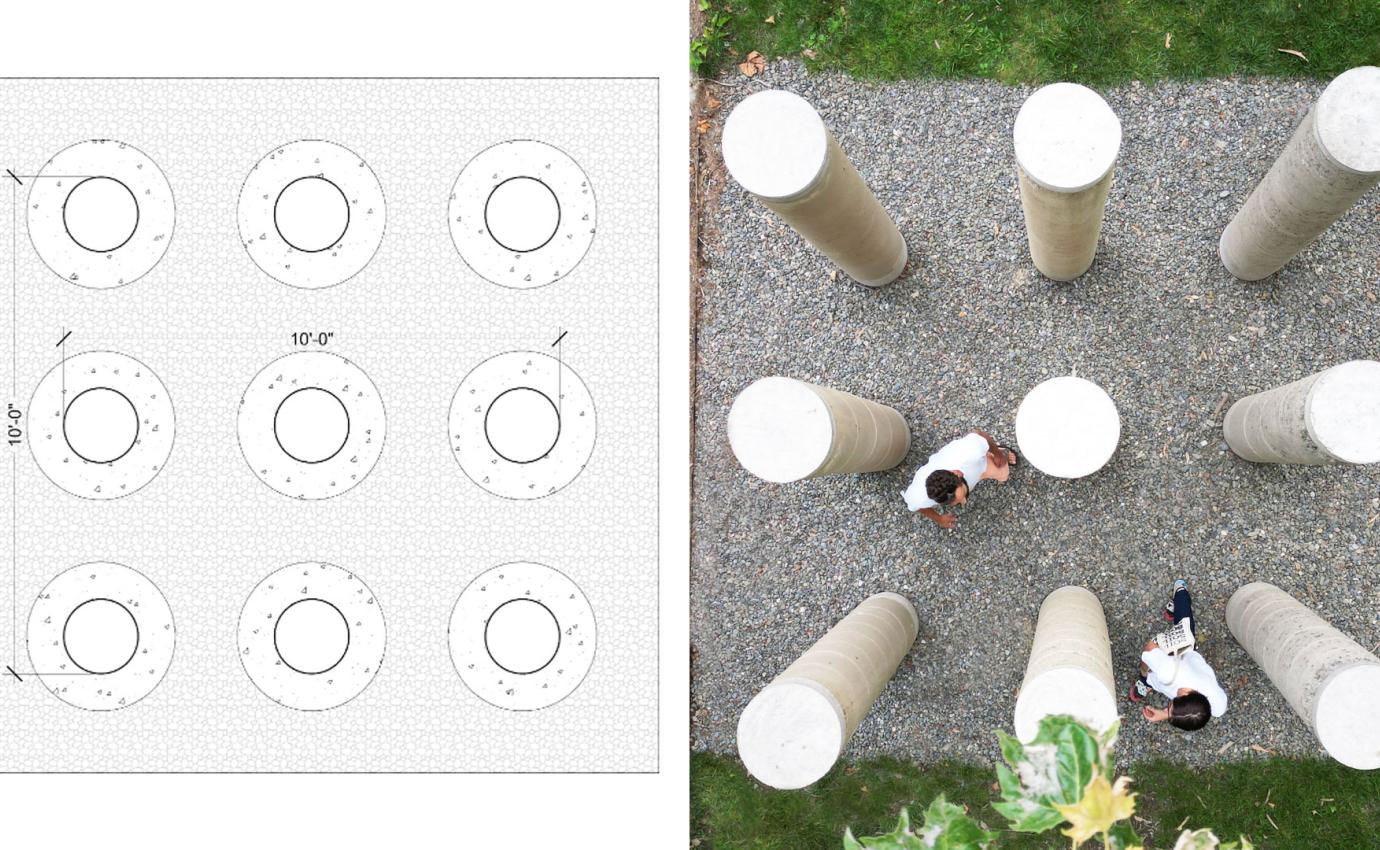
Nine earthen monoliths, 18” in diameter and 8’ tall, are arranged in a 3x3 matrix.
Design Credits: Maxwell Rodencal
Photo Credits: Thanut Sakdanaraseth
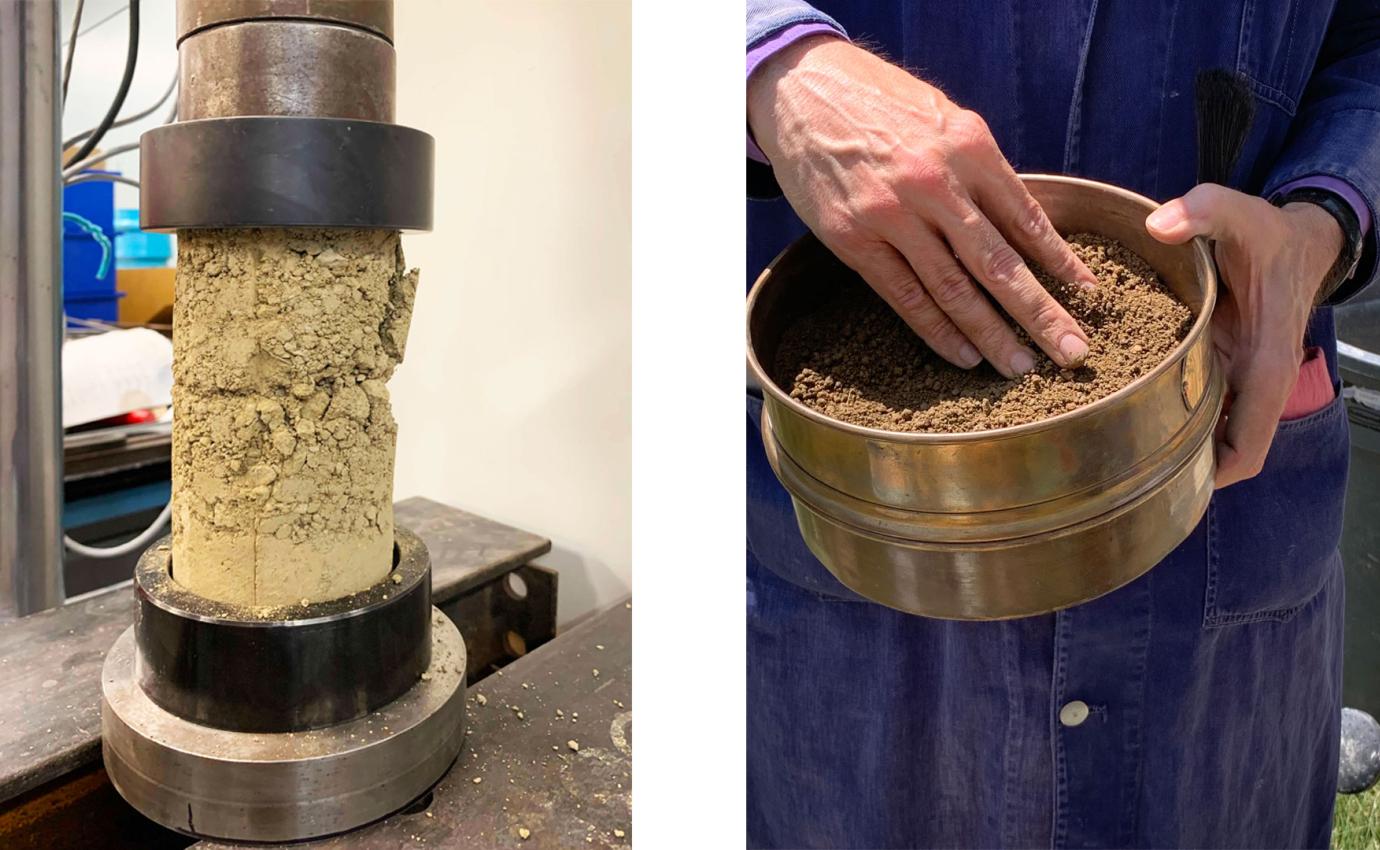
Before the construction started the three local soils from Topmkins County went through a series of scientific tests.
Photo Credits: Maxwell Rodencal
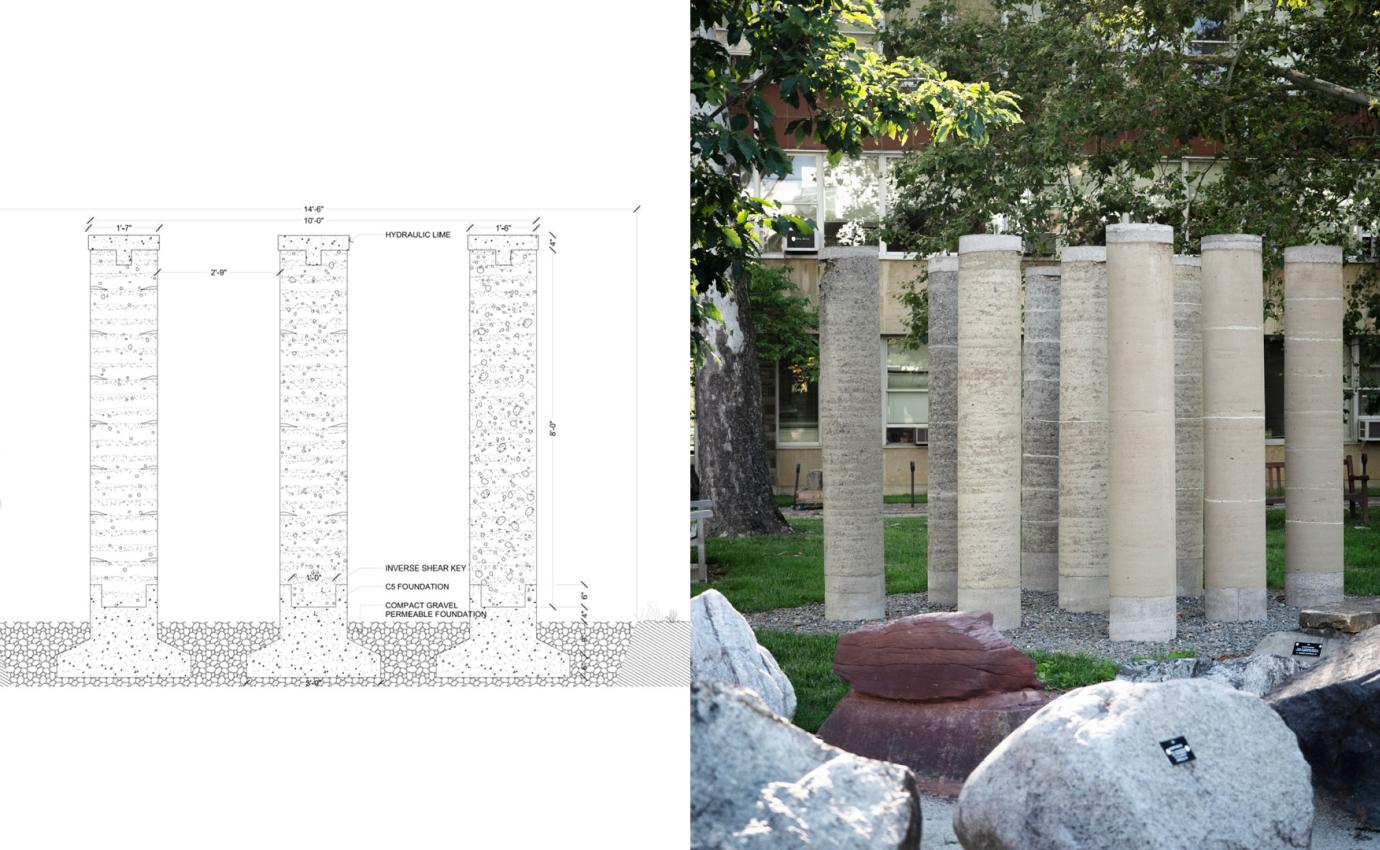
Each cylinder has an assorted material composition of aggregate and erosion barriers out of lime, influencing the progress and nature of weathering.
Design Credits: Maxwell Rodencal
Photo Credits: Thanut Sakdanaraseth
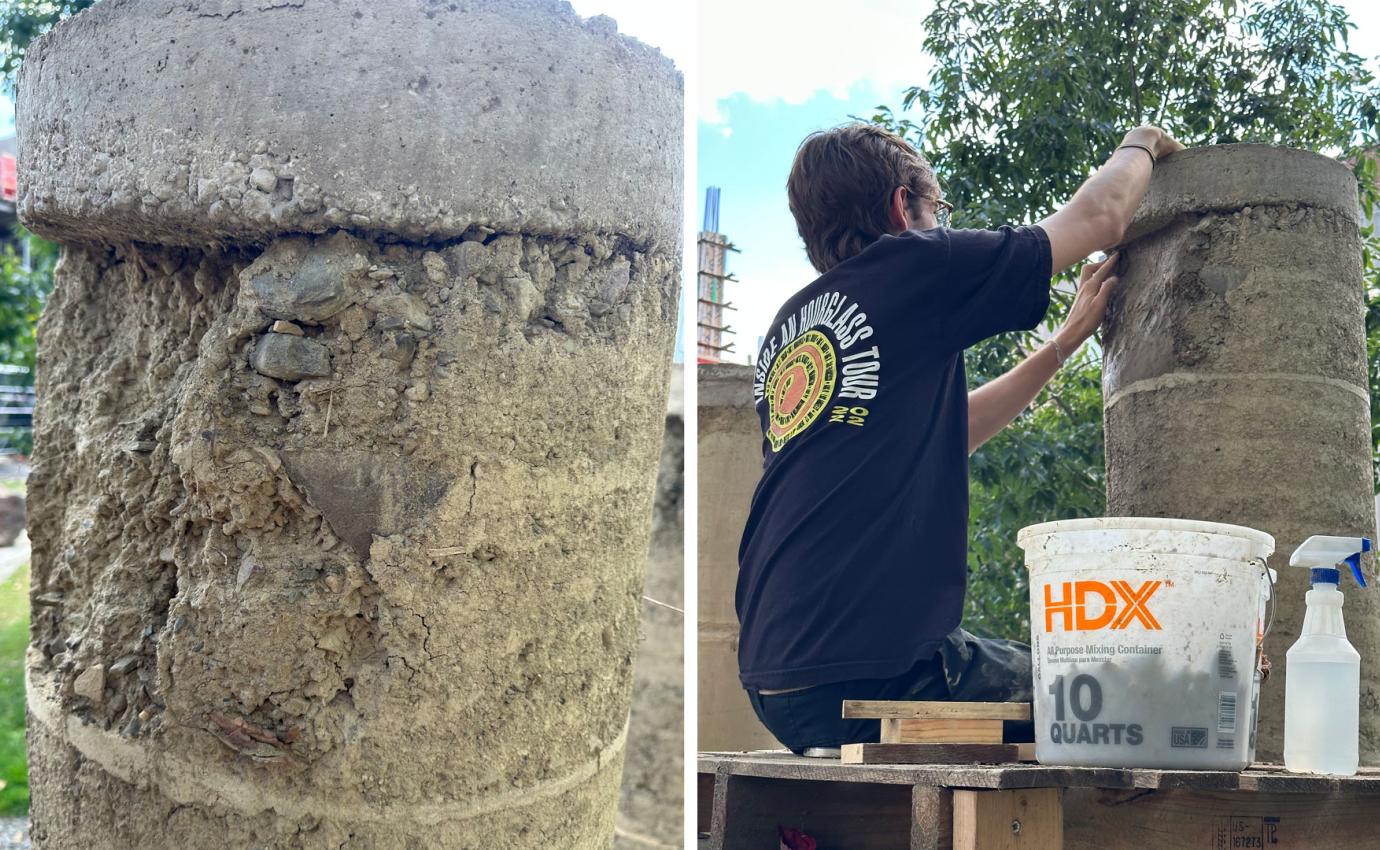
The areas which weathered quickest were patched with new layers of soil mixture.
Photo Credits: Marta H. Wisniewska.
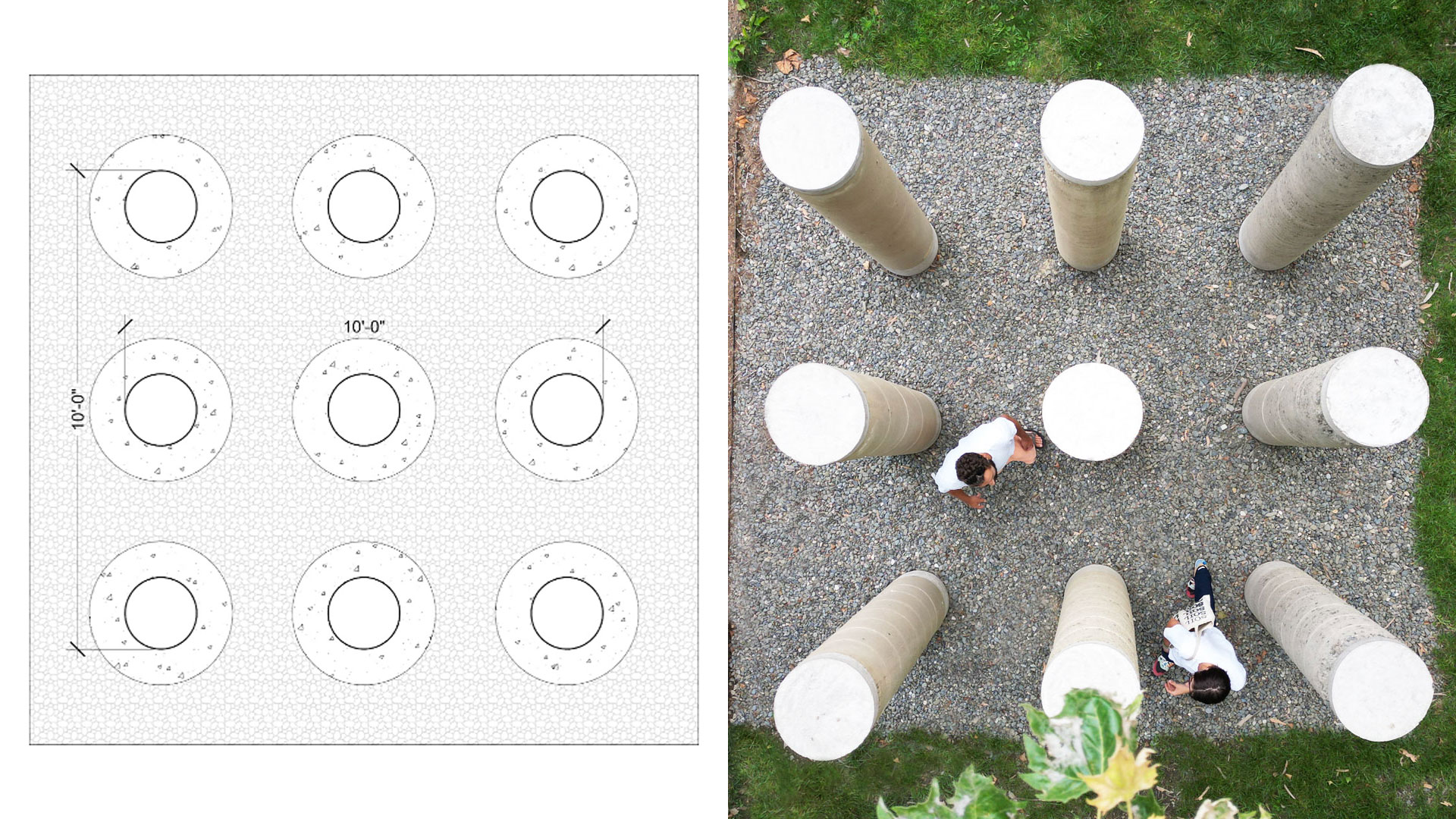
Nine earthen monoliths, 18” in diameter and 8’ tall, are arranged in a 3x3 matrix.
Design Credits: Maxwell Rodencal
Photo Credits: Thanut Sakdanaraseth
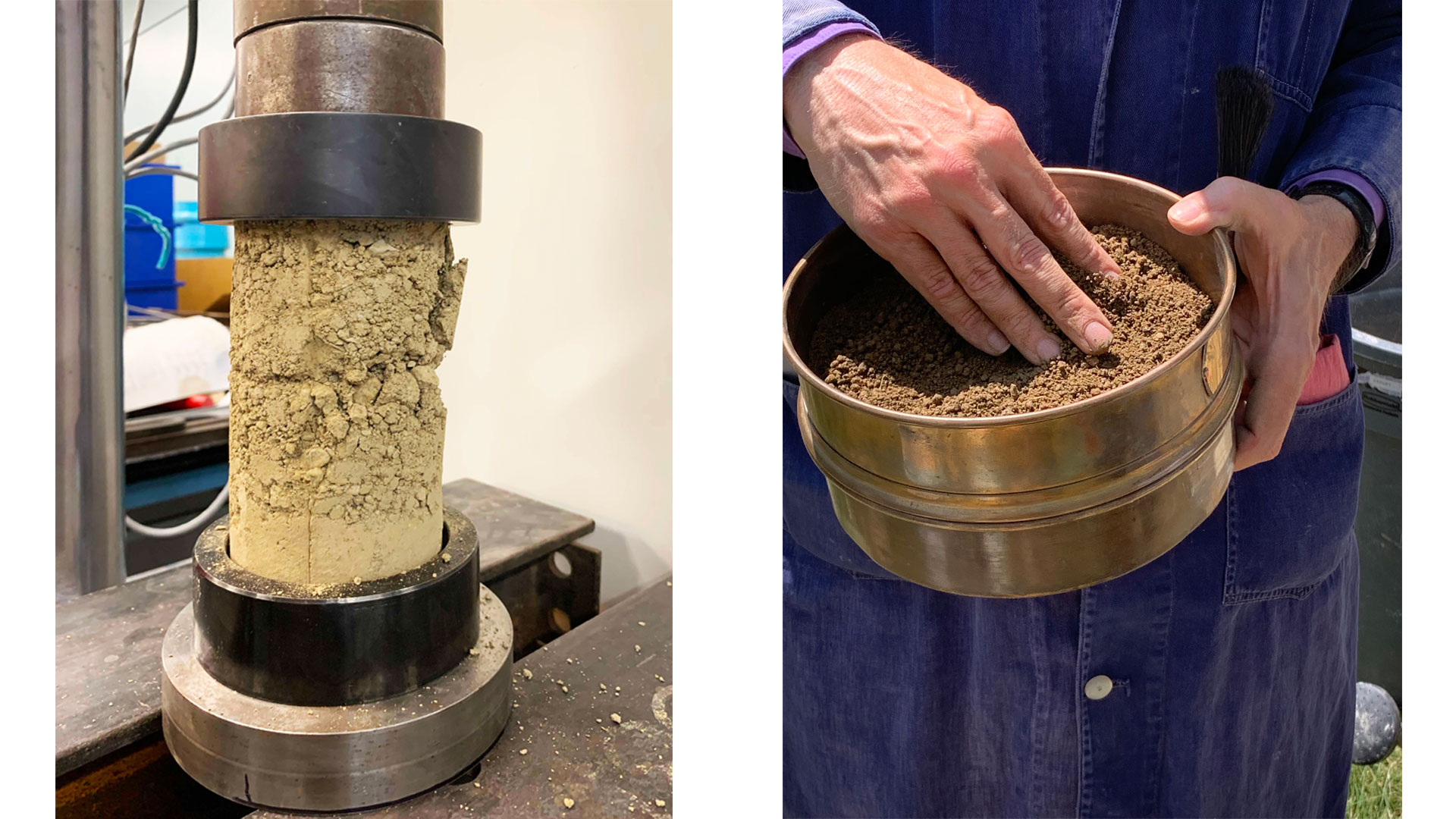
Before the construction started the three local soils from Topmkins County went through a series of scientific tests.
Photo Credits: Maxwell Rodencal
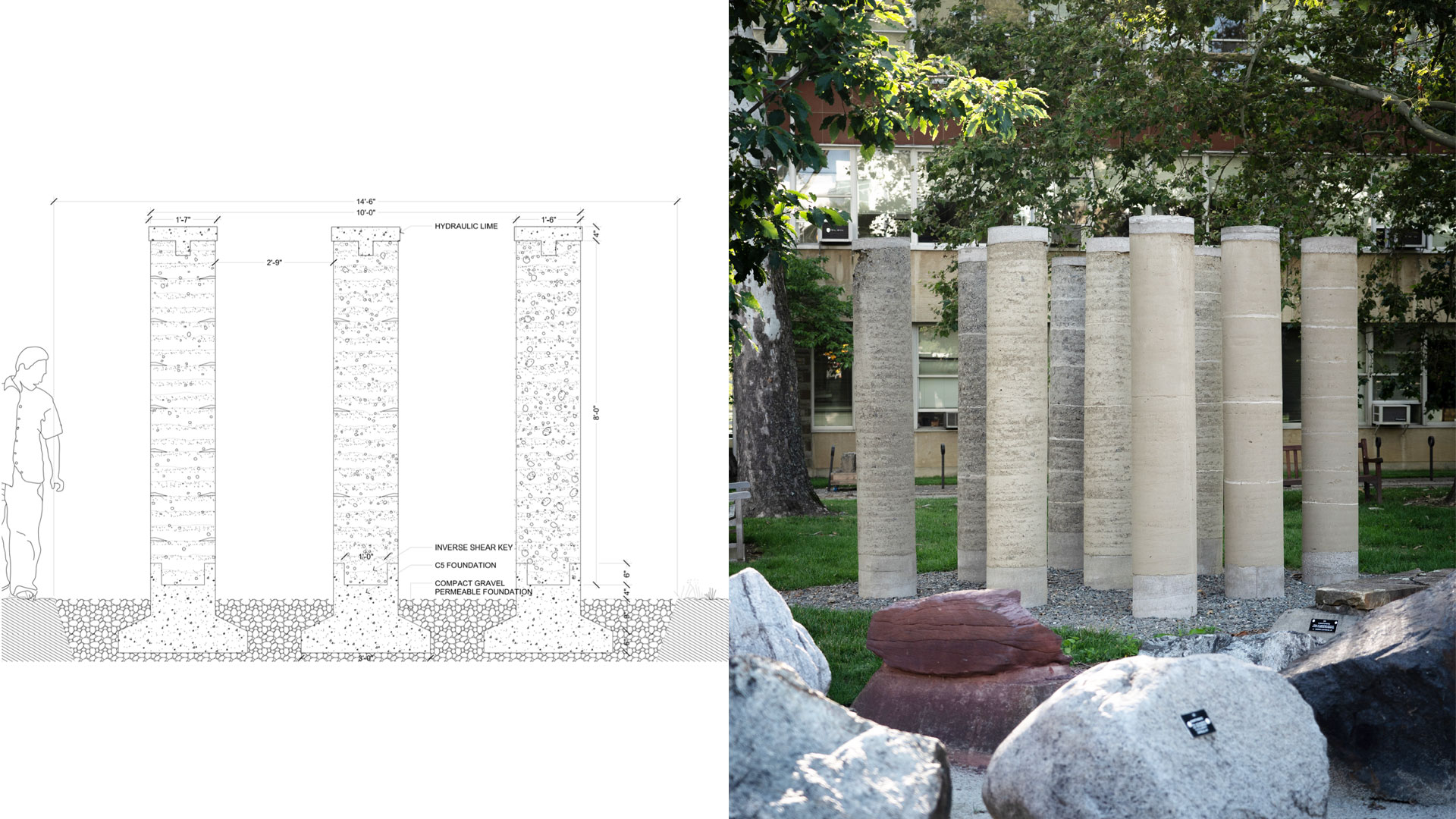
Each cylinder has an assorted material composition of aggregate and erosion barriers out of lime, influencing the progress and nature of weathering.
Design Credits: Maxwell Rodencal
Photo Credits: Thanut Sakdanaraseth
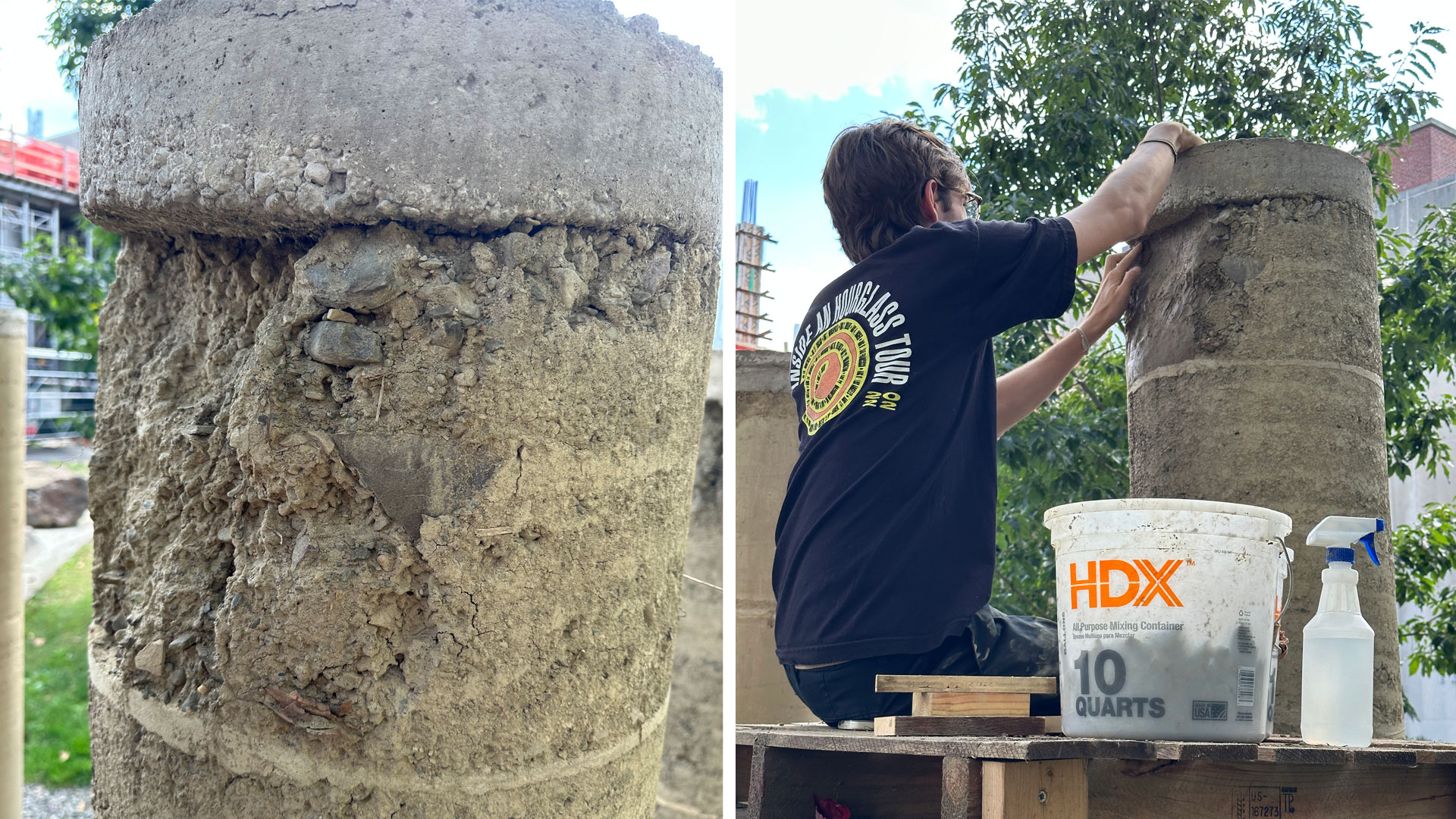
The areas which weathered quickest were patched with new layers of soil mixture.
Photo Credits: Marta H. Wisniewska.
Regenerative Architecture Lab:
Marta H. Wisniewska, Maxwell Rodencal (Project Lead), Julian Helbling, Jesus Mayen
Special Thanks to the Project Partners and Supporters:
David Cutter, James Strait, David P. Orr, Jonathan Matthew Russell-Anelli, spb engineering (Dan Bergsagel, Stephan Hollinger), Les Sills and Cornell Grounds Department
Project Sponsors:
Cornell Council for the Arts,
Deans Professional Development Fund





